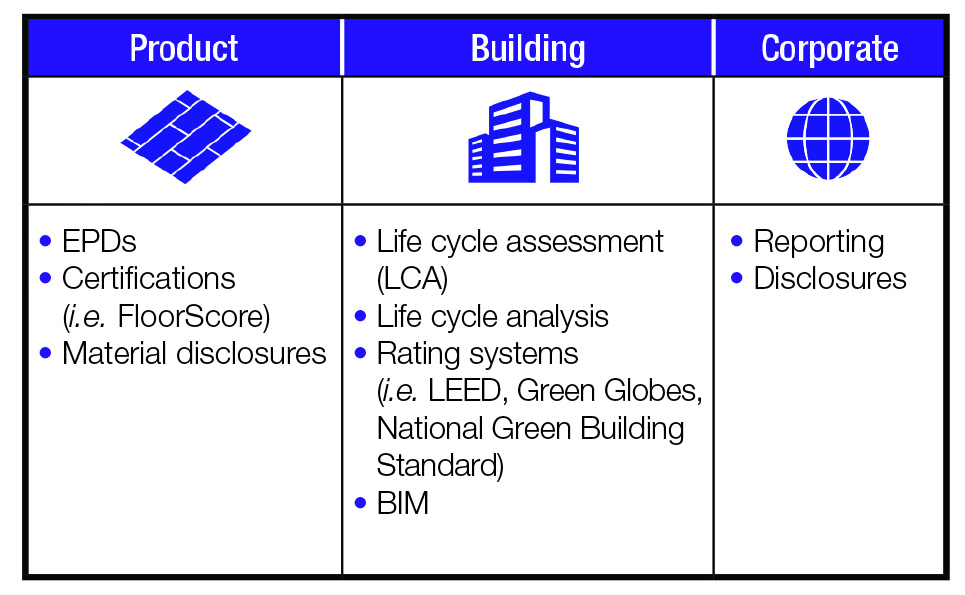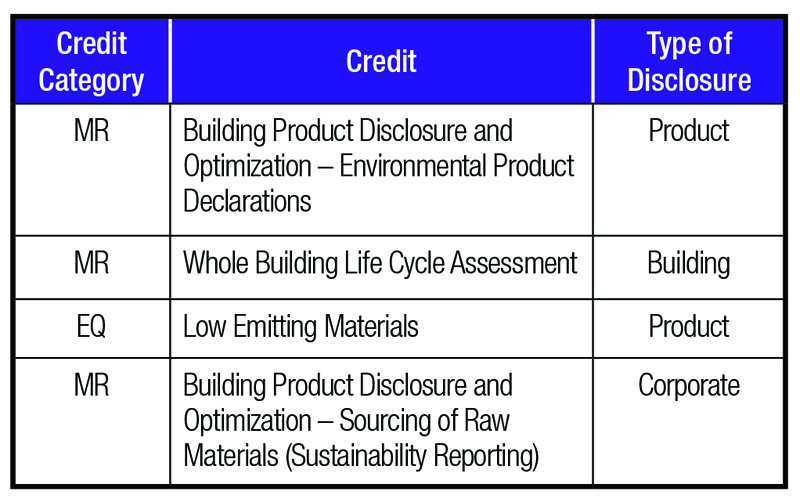
Environmental impacts
Environmental impacts are typically reported through EPDs. However, several key questions should be asked when reviewing or attempting to compare EPDs.
1. What life-cycle stages are included in the study?
LCA studies typically include the ‘cradle’ impacts of a product, or those associated with the raw materials used to make it. They can also include its ‘gate’ impacts, or those associated with manufacturing the product until it leaves for the site. Some manufacturers will further include the impacts to the ‘grave,’ or to the point the product is disposed of at the end of its useful life.
2. On what product category rules (PCRs) was the EPD based?
Unless the same PCRs are used for each, multiple products cannot be compared. For example, the UL Environment (ULE) product category rules for flooring allow five percent of energy to be omitted, while the NSF product category rules for flooring only allow this with one percent of energy. This may not seem like a big difference, but different assumptions result in different outcomes.
3. For what functional unit was the EPD prepared?
A comparison of environmental impacts is only possible if both products have the same functional units. For example, it is possible to compare 1 m2 (11 sf) of a product for one year to 1 m2 of another product for one year, but this becomes more difficult if one of the two products is not measured in m2.

4. What impact characterization factors are used?
EPA developed impact characterization factors known as Tool for Reduction and Assessment of Chemicals and Other Environmental Impacts (TRACI). These factors may not be comparable to others, such as CML factors, which were developed by Leiden University in the Netherlands. For example, TRACI measures eutrophication potential in nitrogen equivalents, while CML measures it in phosphate ion (PO4-3) equivalents. Eutrophication is a type of pollution where too many nutrients enter land or water. Building products contribute to this process when manufacturing processes release nitrogen- or phosphorus-containing chemicals such as ammonia or nitrogen oxides through their air stacks or water discharges.
End-of-life practices
Many companies design products with end-of-life disposal in mind. Some may have developed product ‘take-back’ or recycling programs—for example, in 2016, a cell phone manufacturer designed and introduced a robot able to disassemble the manufacturer’s phones. The introduction of this technology enables the company to recycle its devices. Several building product companies also operate programs that take back products, such as vinyl flooring. Generally, these types of programs support the principle of the circular economy, as they maintain
the value of the materials.




